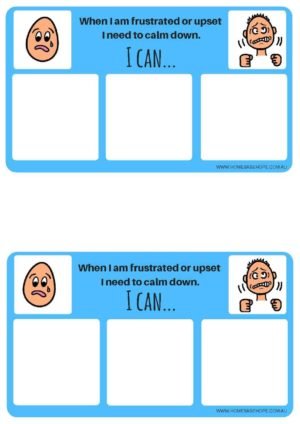Therapeutic Activities. This is a term that parents of children on the spectrum will often hear. It is encouraged to incorporate therapeutic activities into your daily routine to help your child meet their developmental milestones, expose them to multi-sensory environments and encourage social interactions. The overwhelming number of different activities available can get confusing, tiresome and expensive! However, incorporating exciting and effective therapeutic activities into your routine does not need to be complicated and can be enjoyed by the whole family.
While every child on the spectrum (and in general) is unique to the next, one thing many children have in common is the enjoyment of ‘play’. There is a reason why you may often hear the terms ‘play-based therapy’ and ‘play-based learning’ programs. It’s because play is the work of kids!
Another common interest amongst many children is ‘outdoor play’. Ever notice how children who are irritable or have frequent meltdowns simply calm down when they are enjoying the outdoors? The spark returns to their eyes and they completely engage in their activity or explore their surroundings.
Some of the most classic and simple activities enjoyed outside can be an exciting multi-sensory experience, while helping your child with their motor skills and building confidence and interpersonal skills.

Here are 8 inexpensive therapeutic activities and most of all fun outdoor activities you can do with your child:
1. Mud play: Getting busy in mud by creating a café (hello mudpie!) or a mud construction site can develop your child’s sensory processing skills, particularly for kids who are over reactive to tactile and smell sensations. You could even just encourage your child to squish the mud between their fingers and toes. Squelch! Mud play can also develop imaginative play skills, fine and gross motor skills. Nature Play QLD (www.natureplayqld.org.au) have a fantastic article on all the benefits of mud play – worth a read!
2. Water play: It can be fresh water, salt water, a puddle of water, a bucket of water, rock pools or a large body of water! It doesn’t matter! There are so many reasons why you should incorporate water play into your routine. From sensory development, fine and gross motor skills to proprioception and calming input.
3. Build a cubby house: This activity is particularly great to encourage social participation. Encourage your child to communicate, problem solve and take turns as they use their imagination to create their very own cubby house! There is no need to make this complicated, find whatever you can around the house and get creative!
4. Climb a tree: This is something we do not see enough of today. How great is climbing? This works core strength, motor planning, coordination and will provide your child with a sense of accomplishment! Yes, be sensible and mindful of the possible risks, however it is important to remember that risk taking during outdoor play allows children to push their physical and intellectual limits as well as developing a positive social behaviour.
5. Sensory walk: This could be anywhere! Down the street, along the beach, on a bush track – you decide! Encourage your child to focus on their senses, ask your child what they see? Hear? And smell? Tap into their creativity by collecting and foraging different items (leaves, sticks, moss etc..). When you get home make a collage from all the items you collected. Don’t forget to display their work to let them know how proud you are!
6. Barefoot balancing: Encourage your child to challenge their balance by walking on rocks or logs. This will work on their balance and core strength. Turn the activity into an exploration game and see what exciting creatures and debris you can find!
7. Old tyre swing (or any swing): If you are lucky enough to have one of these near you, we definitely encourage you to use it. The swinging motion develops the vestibular (movement) system and promotes coordination of the eyes. You may also find that this activity is calming for your child.
8. Sand play: Sand play develops imaginative play skills, fine motor skills, hand eye coordination and sensory integration skills. Some children with autism may experience higher sensitivity to the texture of sand. That is OK. Take the process slowly and respect their differences.
Of course, every child is different and we understand that a child with autism may experience the sensory input of these activities differently. That’s OK. Feel empowered to experiment and find what works for your child and build on that. If you find that your child is a little hesitant to step outside their comfort zone, give them a small task they can accomplish. In some cases, all our children need is to experience the feeling of success before they are ready to challenge themselves that little extra. And… don’t worry about the mess! The moment you just let go and see your child enjoy the benefits of mud, sand, water and nature the more relaxed you will feel.
Remember…you can feel empowered to contribute and lead the therapy of your child at homebase.








